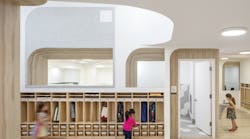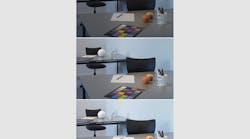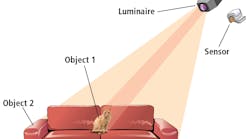At first glance, objects such as clothing, towels, upholstery, and drapes would seem unlikely places on which to place intelligent and interactive systems. Yet these low-tech objects figure prominently in our lives. By integrating flexible arrays of multicolored LEDs into fabrics—and doing so without compromising the softness of the cloth—Philips Research is bringing these inert objects to life.
To meet the challenge of creating light-emitting cloth objects that retain their softness, Philips Research and textile institute TITV Greiz have developed an interconnecting substrate made entirely of cloth. Researchers from Philips have also created flexible and drapable substrates from plastics and films.
Since the fabric material covering the miniature light sources naturally diffuses light, each pixel seems bigger than it actually is. The LEDs, therefore, remain small and unobtrusive, while the fabric retains its soft look and feel.
Photonic textiles can also be made interactive. Philips has achieved interactivity by incorporating sensors (such as orientation and pressure sensors) and communication devices (such as Bluetooth, GSM) into the fabric.
The results of these innovations are as various and promising as they are novel. Photonic textiles open up a wide range of applications in the fields of ambient lighting, communication, and personal health care. Photonic textiles are still a young business.
Even at this early stage, however, Philips envisions partnerships with interior and apparel brands that see the potential of photonic textiles to revolutionize the very concept of fabric. The demonstration at IFA is also meant to show the opportunities offered by this technology and to gain customers’ and visitors’ feedback on these options.







